All-In-One inducible expression system
What are Inducible Expression Vectors?
Inducible Expression Vectors allow for spatial and temporal control of gene expression in mammalian cells. This system is adopted from bacteria which are tetracycline resistant. The tetracycline inducible system constitutes of two components, a tetracycline dependent promoter and a tetracycline-controlled regulator. There are two different types of inducible vectors:
Features of Tet-On system
- Presence of the transactivator and the promoter in the same vector, eliminating the need for another plasmid.
- Modified 3G transactivator for high doxycycline sensitivity.
- High level of induction with minimal background expression.

Experiment : Significant induction of GFP expression was observed in HEK 293 cells transfected with Tet-On vector at Dox dosage of 1ug/ml or higher, 72 hours post treatment, as shown in the microscopic images. Concomitantly, we performed a quantitative measurement of the induction of the GFP expression by Dox on the same cells using a fluorescence plate reader at 0, 24, 48, and 72 hours post Dox treatment.
Conclusion: Raw fluorescence intensity readout (expressed in arbitrary units) in Fig 1 from the plate reader plotted against varying concentrations of Dox within their respective days clearly demonstrates the most effective dosage to be at 1ug/ml or higher which reflects the observation seen in the microscopic images.
OriGene's Inducible Gene Expression Solution
OriGene's All-in-one Tet-On system is a new and improved version of the original Tet-On systems designed to significantly stimulate expression of the downstream gene of interest (GOI). It has a Tet-On 3G transactivator and a tightly regulated TRE promoter (PTIGHT) in one vector. The Tet-On 3G transactivator consists of a modified bacterial Tet repressor (TetR) fused to three minimal VP16 activation domains to create a transcriptional activator protein. Our Tet-On 3G transactivator contains mutations that significantly increase its sensitivity to Doxycycline (Dox), a synthetic analog to tetracycline.
The increased sensitivity is particularly advantageous for in vivo studies in tissues where high Dox concentrations are difficult to attain (e.g., brain). The tightly regulated PTIGHT promoter consists of the conventional TRE sequence fused upstream of the minimal CMV promoter which provides remarkably low basal activity and high maximal expression after induction. The significantly reduced background expression provides an improved dynamic expression range compared to traditional Tet promoter.
Traditional Inducible Expression Vectors
| Vector | E-coli Selection | Mammalian Selection | C-Tag | Promoter |
|---|---|---|---|---|
| pEntry-rtTA | Ampicillin | Neomycin | Myc-DDK | CMV |
| pCMV6-AC-GFP-rtTA | Ampicillin | Neomycin | tGFP | CMV |
| pCMV6-AC-tGFP-rtTA-Hyg | Ampicillin | Hygromycin | tGFP | CMV |
| pCMV6-AC-Myc-DDK-rtTA-Hyg | Ampicillin | Hygromycin | Myc-DDK | CMV |
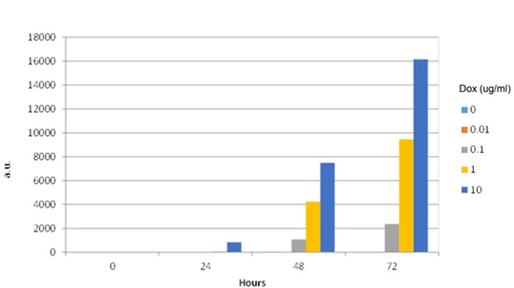

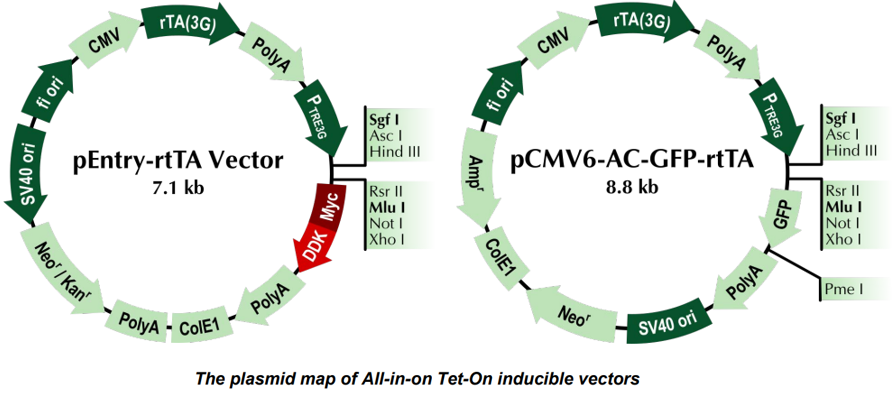
References
Gossen, M. & Bujard, H. (1995) Efficacy of tetracycline-controlled gene expression is influenced by cell type. BioTechniques 89:213-215
Inducible Lentiviral Expression Particles (Overexpression and shRNA available)
(Exclusively Available through our Custom Lentiviral Packaging Services)
| Vector | Mammalian Selection | C-Tag | Promoter |
|---|---|---|---|
| pLenti-Tet-On-GFP | None | tGFP | PGK |
| pLenti-Tet-On-Myc-DDK-Puro | Puromycin | Myc-DDK | PGK |
| pLenti-Tet-On-shRNA-Puro | Puromycin | None | PGK |
Inducible Lentiviral Expression Protocol
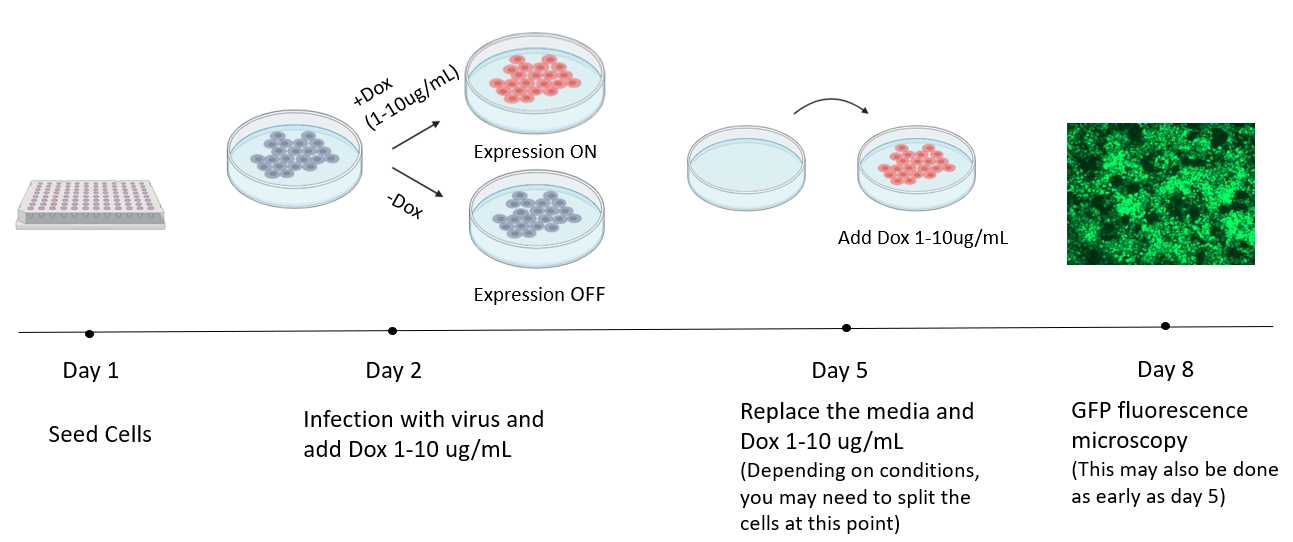

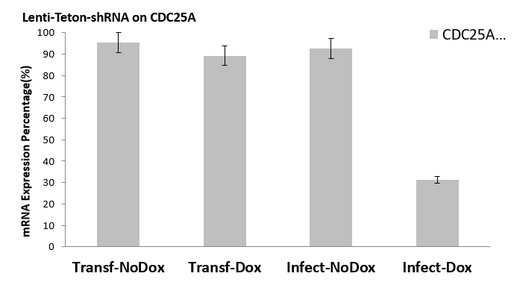
Plasmid Maps
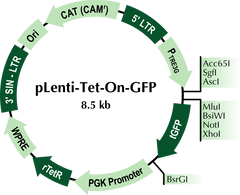
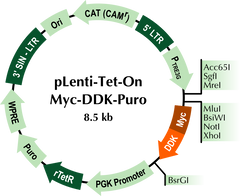
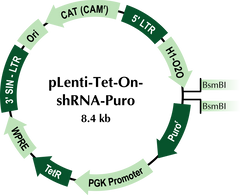
| Inducible Vector Resources |






























































































































































































































































 Germany
Germany
 Japan
Japan
 United Kingdom
United Kingdom
 China
China